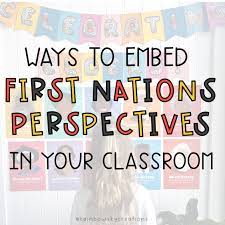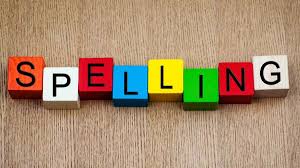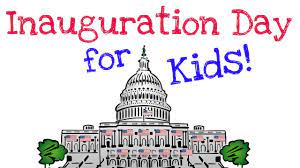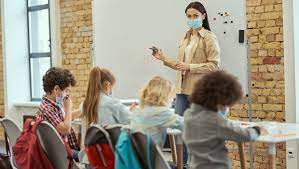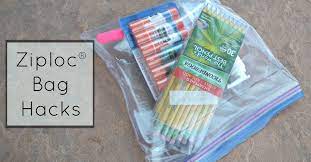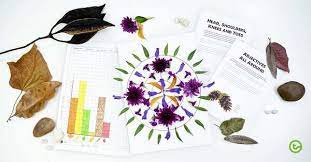Educators are increasingly recognizing the importance of integrating First Nations perspectives into classroom instruction as a means of broadening students’ understanding and appreciation of indigenous cultures and histories. This integration can provide a more comprehensive and inclusive educational experience for all students, promoting respect and reconciliation between indigenous peoples and wider community members.
Incorporating First Nations perspectives into the classroom not only enriches the educational journey but also acknowledges the traditional custodians of the land on which schools operate. It helps in rectifying historical omissions and inaccuracies about First Nations people within mainstream education systems. To genuinely embed these perspectives, several strategies can be adopted:
Curriculum Design:
A starting point is the development of a curriculum that includes First Nations histories, cultures, languages, and contemporary issues. This principle applies not only to subjects like history or social studies but can also be woven into science (indigenous knowledge systems), literature (First Nations authors), and even mathematics (patterns in art).
Community Engagement:
Engaging with local First Nations communities is crucial. Partnerships can lead to co-created programs, inviting elders and knowledge keepers into schools to share oral histories, participate in ceremonies or assist with language programs.
Professional Development for Teachers:
Teachers need proper training to incorporate First Nations perspectives effectively. This includes learning about cultural sensitivity, historical contexts, teaching techniques that honor oral traditions, and being comfortable with addressing complex topics like colonization.
Creating Inclusive Environments:
The classroom environment itself should reflect First Nations cultures visible through artwork, maps, flags, or resources made available. Celebrating significant dates for First Nations communities can also foster inclusivity.
Active Participation in Reconciliation Activities:
Schools play a key role in fostering reconciliation between indigenous peoples and non-indigenous Australians. Educational institutions can encourage student participation in events like National Reconciliation Week or NAIDOC (National Aborigines and Islanders Day Observance Committee) Week.
Resource Development:
Developing teaching materials that accurately represent First Nations perspectives requires collaboration with First Nations educators and organizations to ensure cultural appropriateness and accuracy.
Student-Centered Learning Approaches:
Encouraging students to take the lead creates an environment in which they learn directly from First Nations individuals and resources, delving into projects that are both meaningful and informative.
Assessment Adaptation:
Assessments should allow students to demonstrate their understanding of First Nations perspectives through a variety of methods such as storytelling, art projects, or community involvement activities.
By actively engaging with these strategies, educators will not only pay homage to the traditional owners of the land but will also contribute significantly to the development of well-rounded students who are better prepared as global citizens with a deep respect for diversity and history. Embedding First Nations perspectives is more than an educational preference; it’s a commitment to social justice and equity within the schooling system.
7 Benefits Blogging Classroom
Blogging has become a dynamic tool for educators who wish to enhance their classroom experience. By integrating blogging into their curriculum, teachers can offer their students a multitude of benefits that extend far beyond the traditional learning environment. Here are seven benefits of blogging in the classroom:
1. Enhanced Writing Skills: Blogging regularly encourages students to practice writing and editing, thereby improving their overall communication skills. With an audience in mind, students learn to write more clearly and effectively to convey their thoughts and ideas.
2. Technological Proficiency: Navigating and maintaining a blog requires a certain level of digital literacy. By learning how to use various blogging platforms, students acquire valuable technology skills that are increasingly important in the digital age.
3. Encourages Reflection: Blogging allows students to reflect on what they have learned and express their understanding in their own words. This process not only reinforces their knowledge but also promotes critical thinking as they analyze and synthesize information.
4. Increases Engagement: A classroom blog fosters a sense of community and involvement among students. They are more likely to participate actively when they know their work will be shared with others and can receive feedback from peers and the broader online community.
5. Boosts Confidence: As students continue to write and share their work, they gain confidence in both their writing abilities and in sharing their opinions. This can have a positive effect on all areas of learning by encouraging them to take risks and express themselves more openly.
6. Expands Horizons: Blogging connects students with a global audience, exposing them to different perspectives and cultures. It provides opportunities for collaboration with people from various backgrounds, which can enhance cultural understanding and tolerance.
7. Builds Responsible Digital Citizenship: By publishing on a blog, students learn about online etiquette, safety, and privacy. They become more aware of their digital footprint and how to be responsible contributors to the online world.
Blogging in the classroom offers a productive fusion of technology with traditional teaching methods. It equips students with skills necessary for both academic success and real-world viability while fostering a more engaging, reflective, and collaborative learning environment.
10 Fun Spelling Activity Ideas Use Classroom
Spelling doesn’t have to be a mundane activity confined to memorization and repetition. There are numerous creative and enjoyable ways to help students engage with spelling. Here are ten fun spelling activity ideas that can be used in the classroom.
1. Spelling Bee: This classic game involves students taking turns to spell out words correctly. It’s a fun challenge that enhances vocabulary and encourages healthy competition.
2. Scrabble Scramble: Create a large-scale Scrabble game in the classroom where students form words on the floor using big letter tiles. This collaborative game boosts spelling and strategic thinking.
3. Word Search Puzzles: Custom-create word search puzzles tailored to your current spelling list, challenging students to recognize their spelling words amongst a grid of letters.
4. Spelling Relay Race: Turn learning into an active pursuit! In this relay, each student races to write one word correctly before passing the baton (or marker) to the next teammate.
5. Musical Words: Similar to musical chairs, play music while students pass around a pillow or ball. When the music stops, the student holding it must spell a word from the list correctly.
6. Spelling Jenga: Write letters on Jenga blocks and have students draw from the stack and use those letters to spell new words, ideally from their spelling list if possible.
7. Word Building Blocks: Using blocks or letters on cards, students can physically manipulate components of their spelling words, building them and breaking them down to understand their structure better.
8. Charades with Words: Students act out their spelling words without speaking while others guess. This requires understanding the word’s meaning and fosters teamwork.
9. Hangman with a Twist: Traditional hangman is always engaging; add a twist by using only the hardest words from your class’s list or by integrating subject-specific terminology for cross-curricular learning.
10. Spell & Stretch: Integrate yoga or simple stretching exercises where for each posture held, a student must spell out a word from their list. This not only promotes physical health but also kinesthetic learning.
Incorporating these activities into your teaching plan can make spelling an exciting and dynamic part of language learning. They not only make learning more interactive but also cater to different learning styles and strengths among students, helping them progress with confidence in their literacy skills.
Inauguration Day Activities for Kids Lesson Ideas
On Inauguration Day, educators have a unique opportunity to engage children in the democratic process and help them understand the importance and procedures of presidential inaugurations. Here are several lesson ideas for kids to learn about and celebrate Inauguration Day.
Mock Inauguration Ceremony
Organize a mock inauguration ceremony in the classroom. Select students to play various roles, such as the President, Vice President, Chief Justice, and other government officials. Other students can prepare inaugural speeches or poems.
Crafting Presidential Seals
Provide students with art supplies to create their own interpretation of the Presidential Seal. Discuss the symbolism within the actual seal as inspiration.
Inaugural Parade Reenactment
Encourage kids to stage their own inaugural parade with floats and banners. They could represent historical moments from past inaugurations or aspects of American culture and democracy.
Create an Inaugural Ball
Host a mini inaugural ball where students can learn about this tradition. Play music from past balls and teach children dances that might be featured at such an event.
Letter Writing Campaign
Have the children write letters to the newly inaugurated President expressing their hopes for the nation or sharing ideas that are important to them. This fosters civic engagement and literacy.
Design Inauguration Day Buttons
Allow children to design buttons that they would wear if attending an inauguration ceremony. This art activity can include campaign slogans or patriotic imagery.
Explore Oaths of Office
Teach students about the Oath of Office. Have them write their own pledges on how they would help their community if they were president for a day.
Research Past Presidents
Assign each student a past president to research, focusing on their inaugurations. Students can present findings and discuss how each inauguration reflected its time period.
Play “Inaugural Trivia”
Create a trivia game with facts about Inauguration Day history, traditions, and significant speeches from past presidents.
By incorporating these activities into your Inauguration Day lesson plan, you’ll help kids understand this significant civic event while fostering a sense of patriotism and civic responsibility.
Ambidextrous Kids Classroom
The phenomenon of ambidexterity, or the ability to use both the left and right hands with equal proficiency, is a unique trait found in a small portion of the population. In a classroom setting, catering to the needs of ambidextrous kids can pose a unique set of challenges and opportunities for educators. With tailored strategies that understand and nurture this ability, teachers can greatly enhance the learning experience for ambidextrous students.
Understanding Ambidexterity in Children
Ambidexterity manifests itself in different ways. Some children have no dominant hand and switch between using their left and right hands effortlessly. Others prefer one hand for certain tasks and the other hand for different activities. Recognizing these patterns is vital to providing appropriate support in the classroom.
Benefits of Ambidexterity
Children who are ambidextrous can benefit from their versatility in various ways:
Improved motor skills: The use of both hands develops fine motor skills and coordination.
Enhanced brain development: Ambidexterity is believed to be associated with connecting both hemispheres of the brain, potentially leading to creative problem-solving skills.
Flexibility: Ambidextrous individuals can adjust to situations where a dominant hand might be at a disadvantage.
Classroom Strategies for Ambidextrous Kids
Here are several strategies that educators can employ to support ambidextrous children:
Provide ambidextrous tools: Offer scissors, rulers, and other supplies that are designed for use with either hand.
Flexible seating arrangements: Position desks and workspaces to allow freedom of movement for both arms.
Writing implements: Stock pencils, pens, and markers that are comfortable for all students to grip, regardless of which hand they use.
Encourage experimentation: Allow children to try using both hands during different activities to find what feels most natural for them.
Normalize ambidexterity: Incorporate discussions about famous ambidextrous people and emphasize that this trait is simply another form of diversity.
Avoid forced hand dominance: Do not pressure children to choose one hand over another. Let their preference develop naturally.
Tailored instruction: Provide additional guidance for ambidextrous students during activities traditionally designed with right-handed individuals in mind, such as handwriting.
Praise flexibility: Celebrate the ability of these students to adapt to different tasks using either hand.
Adjusting Assessment Methods
Assessments should be mindful of an ambidextrous child’s unique needs. For instance:
Avoid timed tests that could disadvantage those not using their dominant hand out of choice or necessity.
Consider oral assessments or alternative demonstration methods if handwriting speed is an issue.
Monitor both gross and fine motor skill development across both hands.
Challenges Faced by Ambidextrous Kids
Children who are ambidextrous may face specific challenges:
Confusion or inconsistency in choosing which hand to use for certain tasks may lead to slower skill acquisition temporarily.
There may be societal or cultural pressures favoring right-handedness that can affect self-esteem.
Some may experience difficulty with writing as they may smudge ink more easily when switching hands or due to adopting unusual hand positions.
Support Networks
Creating a support network including teachers, parents, occupational therapists, and even older students who are ambidextrous can provide not only practical support but also reinforce positive self-image and problem-solving strategies.
Conclusion
Inclusive education requires attention to all aspects of diversity, including dexterity. By recognizing and nurturing the abilities of ambidextrous kids in the classroom, educators can foster an environment where every student has the opportunity to excel without barriers. Innovative teaching methods that accommodate this special form of dexterity can make a significant difference in a child’s educational journey.
Composite Numbers
Composite numbers are integers that have more than two distinct positive divisors. This means they can be divided evenly by numbers other than one and themselves. Contrary to prime numbers, which can only be divided by one and the number itself, composite numbers have at least one additional divisor.
The number 4 is an example of a composite number because in addition to being divisible by 1 and 4, it can also be divided by 2. Similarly, the number 6 is a composite number because it has four positive divisors: 1, 2, 3, and 6.
To understand composite numbers better, it’s important to clarify what factors are. Factors of a number are integers that can be multiplied together to produce that number. For instance, if we take the number 12, its factors are 1, 2, 3, 4, 6, and 12. Since there are more than two factors in this list, we identify it as a composite number.
Identifying a composite number is straightforward; any integer greater than one that is not prime is considered composite. However, the differentiation of these numbers continues beyond their definition. Just as we classify prime numbers into different types like twin primes or Mersenne primes, there are also different kinds of composite numbers:
1. Square Numbers: These are composites which can be represented as the square of an integer. For example, 9 (which is 3 x 3) and 16 (which is 4 x 4).
2. Cubed Numbers: These are composites that result from an integer being raised to the power of three. An example would be the number 27 which is equal to \(3^3\).
3. Powerful Numbers: A positive integer is powerful if every prime factor occurs twice or more in its prime factorization. For example, the number \(72\) (which has a prime factorization of \(2^33^2\)), is powerful since both prime factors \(2\) and \(3\) appear squared.
Composite numbers play a critical role in mathematics and its various branches like number theory and abstract algebra. They are also foundational elements in cryptography — particularly RSA encryption — where large composite numbers derived from two priming factors create secure cryptographic keys.
Understanding how composite numbers work helps us gain deeper insight into how integers can be broken down into fundamental building blocks — primes — and reassembled in various ways to create new numbers. It’s through these building blocks that we can explore the realm of mathematics further while applying these concepts to practical situations such as coding theory and internet security protocols.
Sorry Day Activities Classroom
National Sorry Day is an important event in Australia recognized on May 26th each year, acknowledging the historical mistreatment of Aboriginal and Torres Strait Islander people, particularly the Stolen Generations. Within classrooms, it offers a profound opportunity for educators and students to engage in activities that reflect upon and learn from this part of Australia’s history. Here are some respectful and educational activities that could be facilitated in a classroom setting:
1. Acknowledgment of Country: Start the day with an Acknowledgment of Country. Teach children the significance of this practice and encourage them to take part in acknowledging the traditional custodians of the land.
2. Interactive Storytelling: Use storytelling to share the experiences of the Stolen Generations. Age-appropriate books or digital stories can help younger students understand complex concepts with empathy and context.
3. Art Projects: Encourage students to express their learning and reflections through art. This could include collaborative mural painting, indigenous art techniques or creating symbolic sorry stones or sorry flowers.
4. Group Discussions: Host a classroom discussion where students can share their thoughts about Sorry Day. Create a safe space for questions and guide the conversation with respect and sensitivity towards indigenous perspectives.
5. Guest Speakers: Invite members of local Aboriginal communities to share their stories, experiences, and teachings about their culture, history, and the meaning behind Sorry Day.
6. Reflection Activities: Have students partake in writing activities where they pen letters of reflection, hope or apology to understand the effects of past policies on Aboriginal communities.
7. Cultural Performances: Watch or even invite performers to present traditional Aboriginal dances or songs that celebrate their culture while also commemorating this solemn day.
8. Educational Videos: Use documentaries and short films that are appropriate for a classroom setting to depict the events leading up to and subsequent apologies related to National Sorry Day.
9. Library Corner: Set up a section of the classroom with books by Aboriginal authors or about indigenous Australian history for students to read individually or in pairs.
10. Classroom Pledges: End the day by having students make individual or collective pledges on how they can contribute to reconciliation within their community.
Embedding these activities within classroom instruction on National Sorry Day enables educators to impart essential lessons on respect, empathy, multiculturalism, and history that are vitally important for young minds developing an understanding of their shared national context and heritage.
Teaching With a Mask
Teaching with masks has become a common reality in various parts of the world due to the ongoing health and safety measures against respiratory illnesses. Adapting to this new mode of communication in classrooms has presented unique challenges and opportunities for educators and students alike.
One of the significant challenges that teachers face while teaching with a mask is the reduced ability to convey facial expressions. Since much of human communication is non-verbal, wearing a mask can hinder the full expression of emotions and nuanced reactions which are often crucial for creating an engaging learning environment. Teachers have had to rely more heavily on their vocal tone, pitch, and body language to convey meaning and provide feedback.
Additionally, masks can muffle sound, making it harder for students to understand verbal instructions or discussions. This has led to teachers needing to project their voices more clearly and sometimes resorting to voice amplification devices. Clarity of speech and enunciation have become more crucial than ever.
Despite these challenges, teaching with a mask has also had some positive impacts. For instance, it has encouraged educators to explore new pedagogical strategies that are less reliant on verbal communication. There has been an increased use of digital tools and multimedia resources that can cater to various learning styles and provide individualized instructions. Moreover, it has highlighted the importance of clear written instructions and visual aids which can be helpful to all students, especially those who may have hearing difficulties or are non-native speakers of the language of instruction.
Furthermore, educators have noticed an increase in empathy and understanding within the classroom community as everyone adapts together. Students are learning to pay closer attention and become more attuned to other forms of communication which can foster an inclusive environment.
In conclusion, teaching with a mask is a testament to the adaptability and resilience of educators. It serves as an opportunity for innovation in teaching methods and tools while also reminding us of the fundamental human drive for connection and communication even under constrained circumstances. As education continues during times that necessitate mask-wearing, both teachers and students evolve together in this altered landscape of learning.
15 Tips Hacks Ziploc Bags Classroom
Ziploc bags can be a remarkable resource for teachers looking to organize, protect, and maximize classroom materials. Here are 15 tips and hacks for using Ziploc bags in the classroom:
1. Station Organization: Use Ziploc bags to create individual activity packets for centers or stations. Each can hold instructions and materials, keeping everything contained.
2. Manipulative Storage: Small math manipulatives like counters or base ten blocks can be stored in Ziploc bags.
3. Puzzle Pieces: Keep puzzle pieces from getting lost by storing them in a bag.
4. Document Protection: Place important papers or student work that needs to be protected from spills and wear into Ziploc bags.
5. Reading Bags: Assemble a book, reading log, and pencil in a Ziploc bag for take-home reading material.
6. Craft Supplies Organization: Sort craft supplies like beads, stickers, or sequins into separate bags for easy distribution during art projects.
7. Ice Packs: Fill a bag with dish soap or corn syrup and freeze it for a flexible ice pack that’s perfect for minor bumps.
8. Word and Letter Games: Use Ziploc bags for individual sets of magnetic letters or printed words for sorting and making sentences.
9. Seasonal Clothing Storage: Store extra clothes for students who have accidents or make messes in labeled Ziploc bags.
10. Seed Growing Experiments: Plant seeds with wet paper towels in transparent Ziploc bags to create mini greenhouses that stick to windows.
11. Sorting Activities: They’re perfect for color sorting, shape sorting, or any other type of sorting activities where small pieces are involved.
12. Sensory Bags: Seal items like hair gel and food coloring or flat marbles in a bag allowing children to safely explore sensory input without making a mess.
13. Flashcards Holder: Use the bags to store flashcards or small phonics cards, which can be easily distributed and packed up after use.
14. Field Trip Organizer: Provide each child with a labeled Ziploc with snacks, a name tag, and any other necessary items for the trip to ensure nothing gets lost.
15. Homework Kits: Send home homework supplies like pencils, erasers, and other stationery inside a bag so students have everything they need at their disposal.
These simple yet effective hacks can streamline classroom management and enhance the learning environment by keeping materials organized, easily accessible, and in good condition.
National Day Bullying Violence Classroom Activity
Bullying is an issue that affects individuals in schools across the nation. To combat this problem, the National Day of Bullying Prevention is observed to spread awareness and promote anti-bullying measures. On this day, educators have the opportunity to introduce activities in their classrooms that can help build a community of kindness and unity. Here are some classroom activities that can be implemented on the National Day of Bullying Prevention:
1. Open Discussion: Begin with an open discussion about what bullying is and the various forms it can take, including physical, verbal, and cyberbullying. Allow students to share their experiences and feelings on the subject in a safe space.
2. Role-Playing Exercises: Organize role-playing scenarios where students act out different situations involving bullying. This helps them understand the impact of their actions and develop empathy for others.
3. Creating an Anti-Bullying Pledge: Involve students in creating a class pledge against bullying. Have each student contribute a line to the pledge, creating a powerful message from the collective voice of the class.
4. Kindness Chain: Encourage students to write acts of kindness on strips of colored paper and link them together to create a chain that can be hung around the classroom or school as a visual reminder of the power of positive behavior.
5. Art Projects: Use art to give students a way to express their feelings about bullying and its effects. They can create posters or drawings that could then be displayed around the school to encourage others to stand up against bullying.
6. Educational Videos and Resources: Show educational videos that discuss real-life stories about bullying and how it was overcome. Follow up with discussions or assignments related to these resources.
7. Peer Support Groups: Establish peer support groups where students can talk about their experiences with bullying in a structured environment, supervised by teachers or counselors.
8. ‘Walk in Someone Else’s Shoes’ Exercise: Create an empathy-building activity where students write down one challenging thing they have faced and trade papers with another student. This allows them to gain perspective on other people’s struggles.
9. Conflict Resolution Workshops: Teach students effective conflict resolution skills so they feel equipped to deal with disputes peacefully and constructively.
10. Anti-Bullying Skits: Have small groups prepare skits that demonstrate different ways to handle bullying situations, emphasizing non-violent strategies and seeking help from adults when necessary.
These classroom activities for National Day of Bullying Prevention will not only highlight the importance of standing against bullying but will also foster an environment where every student feels valued and supported. Developing these critical social skills in children will contribute significantly toward a more compassionate future for all.
Voice Care for Teachers
Voice care is crucial for teachers, as their profession demands extensive use of their vocal apparatus. Teachers often experience vocal strain and various voice problems, which can lead to long-term damage if not addressed properly. The voice is not just an instrument for communication; it is a significant tool for teachers to engage, instruct, and manage their classes.
Understanding the Basics of Vocal Health:
The human voice is produced by the vibration of the vocal cords located in the larynx. Several factors contribute to vocal health, including hydration, diet, rest, and proper speaking techniques.
Hydration:
One of the most important aspects of voice care is maintaining hydration. Vocal cords need lubrication to function optimally. Teachers should drink plenty of water throughout the day to keep the throat moist and avoid irritants like caffeine and alcohol that can cause dehydration.
Diet and Lifestyle:
Certain foods can affect voice quality. Spicy and acidic foods can lead to acid reflux that may damage the throat and vocal cords over time. Additionally, smoking can have severe repercussions on vocal health, leading to chronic laryngitis or even cancer.
Vocal Rest:
Just like any other muscle in the body, the vocal cords need rest. Teachers should take breaks from speaking when possible and be mindful of their vocal use outside of classroom hours.
Proper Speaking Techniques:
Many teachers may not be aware that there are techniques to protect their voice from strain:
Speak from the diaphragm rather than from the throat; this produces a stronger voice with less strain.
Avoid yelling by using non-verbal signals or amplification devices in larger rooms or noisy environments.
Maintain good posture as it allows for proper breathing which is essential for healthy voice production.
Warm-up Exercises:
Simple warm-up exercises can prepare the voice for a day of teaching. Humming gently up and down in pitch helps wake up the vocal cords.
Voice Therapy:
For teachers experiencing persistent problems with their voice, consulting a speech-language pathologist might be beneficial. They specialize in treating voice disorders and can offer tailored exercises and strategies for voice improvement.
Creating a conducive environment in classrooms can also help reduce the need for a raised voice. For instance, setting up classroom rules to manage noise levels or arranging seating to minimize distance between teacher and students can be effective.
Conclusion:
Teachers must prioritize their vocal health as they would any other professional tool. By staying hydrated, eating right, resting their voices, practicing good speaking techniques, doing warm-up exercises, possibly seeking therapy when needed, and creating optimal classroom environments, they can preserve their voices for many years of teaching. Voice care is an important aspect of self-care for educators and should be recognized as such within educational systems worldwide.
Using Natural Resources in the Classroom Learning With Nature
The integration of natural resources into classroom learning is a groundbreaking approach that brings the environment into education. This practice can significantly enhance students’ understanding of the world around them, foster a connection with nature, and provide a multifaceted learning experience.
Incorporating natural resources can take many forms within the educational setting. From elementary to high school, educators have the opportunity to enliven their curricula with real-world examples and hands-on experiences. For instance, science classes can benefit tremendously from the direct examination of rocks, minerals, and soil samples during geology lessons. Rather than solely relying on textbook imagery, students get to touch, feel, and see what they’re learning about, which can help to cement their knowledge through sensory engagement.
Mathematics also finds an interesting partner in nature. By measuring the growth of plants or calculating the volume of water in different states of matter, students learn mathematical concepts in a tangible and relevant context. This not only reinforces numeracy skills but also teaches them about plant biology and physical changes in matter.
Language arts classes can draw inspiration from nature by encouraging students to write descriptive essays, poems, or stories about their experiences or observations outdoors. This not only enhances vocabulary but also allows children to practice their expressive skills while being inspired by natural beauty.
One of the most significant impacts of using natural resources in education is on environmental awareness and stewardship. When children learn early on about the biodiversity around them and recognize how each element plays a role in the larger ecosystem, they are more likely to grow up valuing and protecting these resources. Moreover, bringing environmental issues closer to their experiences enables them to understand the implications of human activity on ecosystems and fosters a sense of responsibility for sustainable living.
Challenges such as accessibility to safe outdoor spaces or the supply of materials must be addressed when incorporating natural resources into teaching. Schools with limited access can turn to community parks or local nature centers that often provide educational programs and resources for classes. Virtual resources such as documentaries, online databases, and interactive applications can also serve as effective supplements when direct contact with nature is not feasible.
In conclusion, using natural resources in classroom instruction offers a dynamic way to enhance educational outcomes while promoting environmental literacy and ethical awareness among students. It embodies an engaging avenue for discovery that encourages curiosity, respect for nature, and a lifelong love for learning that permeates beyond school walls.
